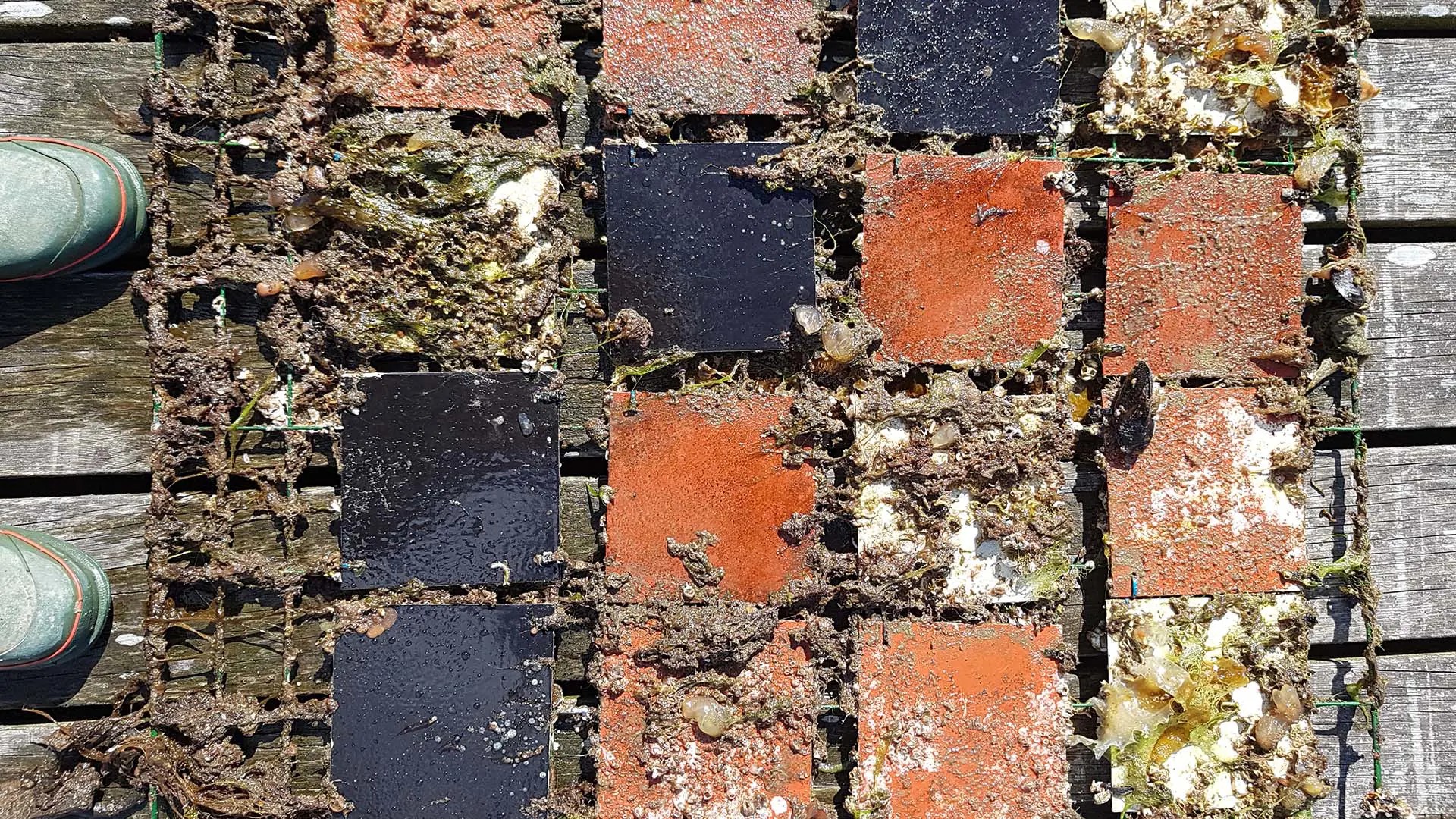
Emissions from copper-based antifouling paints are a well-known environmental problem. As much as 40 percent of copper inputs to the Baltic Sea come from antifouling paints on ships and leisure boats. According to a new study from Chalmers University of Technology, Sweden, this is completely unnecessary. When the researchers compared copper-based antifouling paint with biocide-free silicone-based paint, they found that the environmentally friendly alternative was best at keeping the fouling at bay.
"This means that we now have a great opportunity to drastically reduce the release of the heavy metal into our sensitive sea. This is the first independent scientific study to show that silicone paint is more effective than copper-based paint in the Baltic Sea region," says Maria Lagerström, researcher in marine environmental science at Chalmers.
Together with colleagues at the University of Gothenburg, the Swedish Environmental Institute IVL and Chalmers, Maria Lagerström investigated whether biocide-free silicone paints on the hulls of ships and leisure boats are a viable alternative to copper-based bottom paints to combat fouling. The study was carried out over a year at three sites in the Baltic Sea region and the Skagerrak and the results have been published in the scientific journal Marine Pollution Bulletin.
Environmentally friendly paints are rarely used
The use of copper in antifouling paints is a known and widespread environmental problem for aquatic plants and organisms in the Baltic Sea. The heavy metal does not degrade in the environment and it is therefore common for water, sediment and soil in marinas, ports and shipyards to be contaminated and exceed environmental guideline values for copper. An earlier study from Chalmers shows that antifouling paints account for as much as 40 per cent of the total copper inputs to the Baltic Sea.
"As the Baltic Sea is an inland sea, it takes 25–30 years for the water to be exchanged. This means that the heavy metal remains for a very long time. It is therefore important to be aware of the substances we release," says Maria Lagerström.
Despite the negative impact of heavy metals on the marine environment, the antifouling paint market for ships and recreational boats is completely dominated by copper-based paints. The market share of silicone-based paints for the shipping sector was 1 percent in 2009 and increased to 10 percent in 2014. For the recreational boating sector, the proportion of boats painted with silicone paint is estimated to be significantly lower. And although there are more environmentally friendly options on the market, change seems to be hard to bring about.
"Both the shipbuilding industry and the leisure boating sector have one thing in common: they are highly traditional. People like to use the products they are used to, and they are also skeptical as to whether non-toxic alternative solutions really work," says Maria Lagerström.
Effective even over a longer period of time
Although the study of the different antifouling paints was completed after twelve months, the results were found to persist over time.
"We actually left our test panels at one of the test sites. These have now been under the surface for over two years. We can see that the silicone paint still works well and, more importantly, works better than the copper paint," says Maria Lagerström.
More on the research and antifouling paints
- The scientific paper ‘Are silicone foul-release coatings a viable and environmentally sustainable alternative to biocidal antifouling coatings in the Baltic Sea region?’ has been published in the journal Marine Pollution Bulletin.
- The study is led by Maria Lagerström, Anna-Lisa Wrange, Dinis Reis Oliveira, Lena Granhag, Ann I. Larsson and Erik Ytreberg. The researchers are based at Chalmers University of Technology, the University of Gothenburg and the Swedish Environmental Institute IVL.
- Traditional antifouling paints inhibit fouling by continuously leaching copper and/or other toxic substances that are poisonous to marine organisms. For silicone paints, it is instead its smooth surface properties that make it difficult for fouling to stick to the hull. The paints are also self-cleaning, which means that any fouling that has managed to stick is removed as the hull moves through the water.
- Silicone paint is based on the substance silicone, which is produced using silicone oxide extracted from sand. The scientific paper’s collection of ecotoxicological studies shows that silicone paints are significantly less harmful to the environment than copper paints. But some silicone paints contain highly fluorinated substances, known as PFAS, which are very resistant to biodegradation in the environment. However, the silicone paint tested in the study was fluorine-free.
- The research was funded primarily by the Swedish Transport Administration, within the framework of the Lighthouse Swedish Maritime Competence Centre and the Sustainable Shipping project.
For more information, contact:
Maria Lagerström, researcher, Department of Mechanics and Maritime Sciences, Chalmers University of Technology
+46 31 772 46 23, maria.lagerstrom@chalmers.se

- Researcher, Transport, Energy and Environment, Mechanics and Maritime Sciences